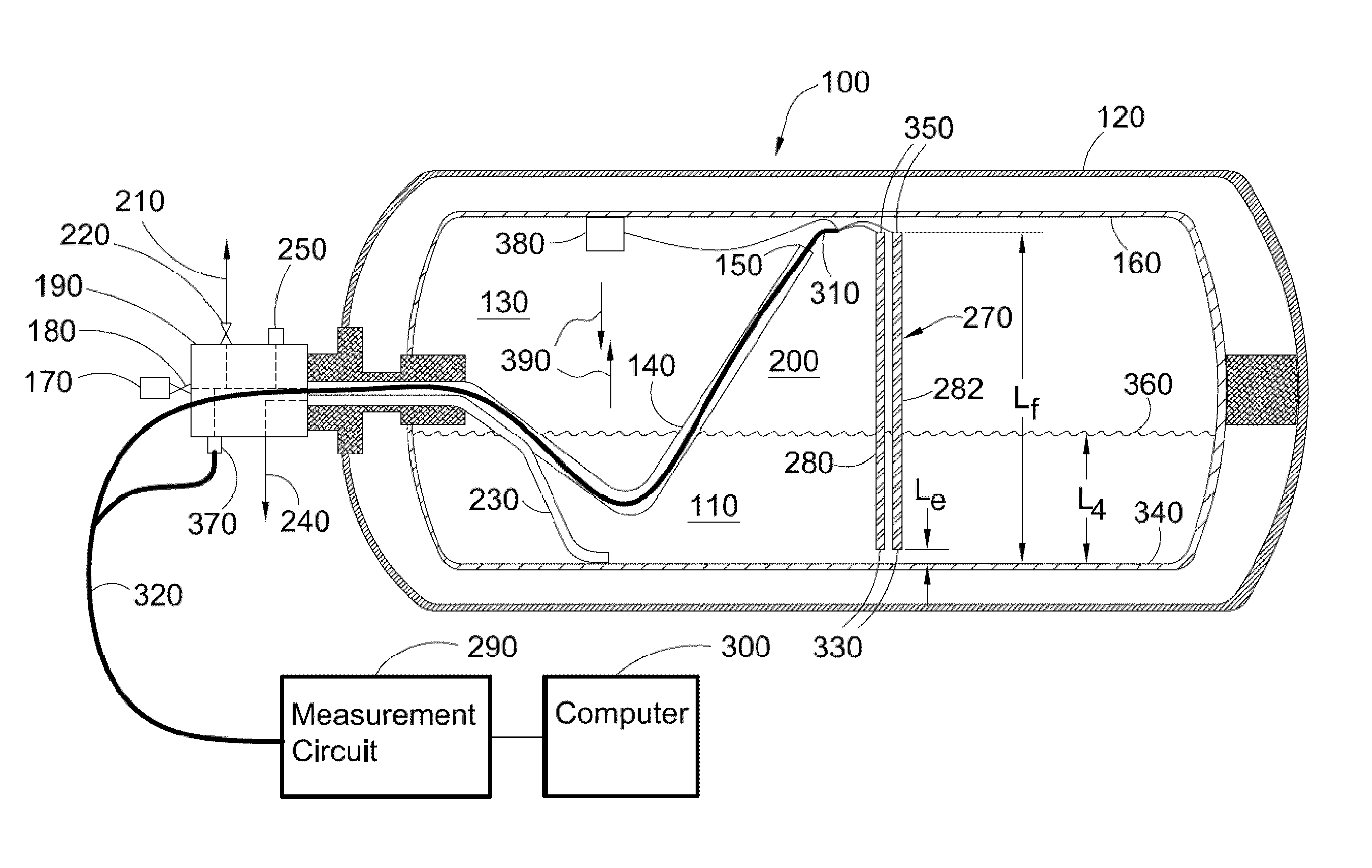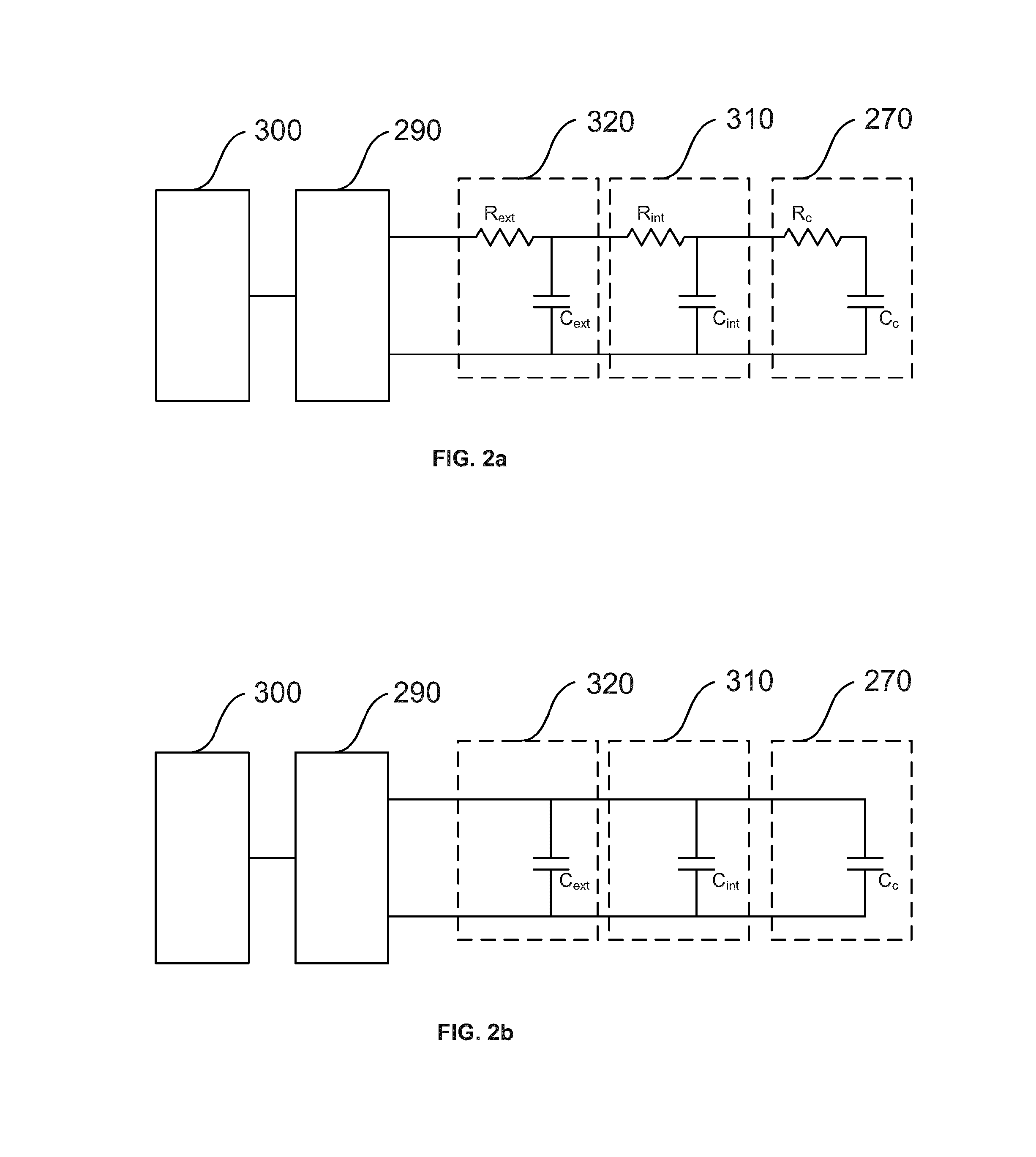Apparatus And Method For Volume And Mass Estimation Of A Multiphase Fluid Stored At Cryogenic Temperatures
- Summary
- Abstract
- Description
- Claims
- Application Information
AI Technical Summary
Benefits of technology
Problems solved by technology
Method used
Image
Examples
Embodiment Construction
)
[0026]Referring to the figures and first to the illustrated embodiment of FIG. 1, there is shown an apparatus 100 for estimating a volume and a mass of a cryogenic liquid 110 in cryogenic storage tank 120. Cryogenic space 130 is filled by introducing cryogenic fluid through conduit 140 comprising open end 150 disposed near top 160. Cryogenic fluid can be introduced into conduit 140 through coupling 170 which is located outside tank 120. Coupling 170 can comprise shut off valve 180 that opens when coupled to a fill nozzle, and closes when the fill nozzle is not coupled to coupling 170.
[0027]Manifold block 190 can be used to reduce the number of fittings and connections to simplify assembly and reduce the number of potential leak points. Internal passages within manifold block 190 connect the conduits that extend into the interior of tank 120 with at least four outside connections. As previously indicated, one internal passage leads from conduit 140 to coupling 170 for filling cryoge...
PUM
 Login to View More
Login to View More Abstract
Description
Claims
Application Information
 Login to View More
Login to View More - R&D
- Intellectual Property
- Life Sciences
- Materials
- Tech Scout
- Unparalleled Data Quality
- Higher Quality Content
- 60% Fewer Hallucinations
Browse by: Latest US Patents, China's latest patents, Technical Efficacy Thesaurus, Application Domain, Technology Topic, Popular Technical Reports.
© 2025 PatSnap. All rights reserved.Legal|Privacy policy|Modern Slavery Act Transparency Statement|Sitemap|About US| Contact US: help@patsnap.com



